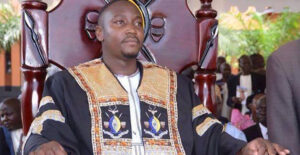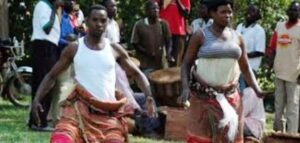Who are the Basoga?
The Soga are the Eastern neighbors of the Baganda in Uganda. They occupy the region between Lake Victoria and Lake Kyoga the present day districts of Kamuli, Jinja and Iganga. They make up about 8 percent of Uganda’s population (govisitkenya.com).

Source: gorillatrekkingtoursandsafaris.com
They commonly maintained gardens for domestic use close to the homestead. Early inhabitants of this region were Nilo-Hamitic tribes like the Langi and Iteso as well as the Bagisu (a Bantu tribe)
Later, the Soga who had immigrated from the East expelled the early inhabitants. The Soga also adopted the traditions and life-style of the early inhabitants. The clan chiefs defined daily life in the society and they distributed land for cultivation.
What was the first religion of Basoga people?
Spiritual rites among the Basoga were performed by those authorized.
Ancestral worship was also practiced. Many gods and semi-gods as well as Lubaale, their creator, were worshipped. In general, they believed in animated nature which had to be offered sacrifices.

Source: govisitkenya.com
Traditional religion of Basoga
The Basoga believed in the existence of a spirit world. They called the Supreme Being Lubaale. Human agents worked as messengers of Lubaale, or the ancestors, or other minor gods.
To the Basoga, the spirit world, places of worship, animated objects and fetishes had power to do good to people. They also had power to do evil to the living.
The Basoga call magicians, fetish men and spirit mediums Bachwezi. The Basoga believed in the existence of gods and sub-gods.
Below Lubaale, there were Mukama, the creator of all things. There was Jjingo, the public god who offered to the general needs of people. Nawandyo and Bilungo are the gods of plagues. Semanda, Gasani and Kitaka, were other gods the Basoga believed in.
Leadership in Busoga region
Traditionally, the Busoga society consisted of a number of small kingdoms. These were not united under a single paramount leader (govisitKenya.com).
Unlike the Kabakas (kings) of Buganda, Busoga kings are members of a royal clan. They are selected by a combination of descent and approved by royal elders.
In northern Busoga, near Bunyoro is the royal clan called the Babiito. This clan is believed to be related to the Biito aristocracy in Bunyoro.
Some Basoga in this area are convinced that their ancestors are the people of Bunyoro (govisitKenya.com).
What was the social and economic life of Basoga People?
The community was organized around a number of principles. The most important of all was descent. Descent was traced through male ancestry. This led to the formation of a patrilineal bracket, which included an individual’s closest relatives.
This group provided guidance and support for each individual. It also united related homestead for economic, social, and religious purposes. The women of the household cared for the most common staple foods. These included; bananas, millet, cassava and sweet potatoes.
Men generally cared for cash crops, these being coffee, cotton, peanuts and corn. Lineage membership determined marriage choices. They also determined inheritance, and obligations to worship the ancestors.
An individual usually attempted to improve his economic and social position. This was initially based on lineage membership. It was done by skillfully manipulating patron-client ties within the authority structure of the kingdom.
A man’s patrons, as much as his lineage relatives, influenced his status in society.

Source: aonesafaris.com
What are the origins of Basoga?
Due to the continuous movements and intermingling of the people within that region, the history of these people is complex.
It can be asserted however that the earliest inhabitants of Busoga belonged to the same Bantu group. This comprised the Batooro and Baganda.
Their origin can therefore be traced like other Bantu groups to the Katanga region of Central Africa. Tradition holds that the earliest inhabitants were the Langi, the Iteso, and Bagisu. They were later engulfed by migrants from Buganda.
Who were the earliest settlers of Busoga region?
The earliest settlers in Busoga are said to have occupied Lake-shore areas. These are areas of modern Bukoli. Banyankole are believed to have been among these earliest inhabitants. These early settlements took place far back in the 14th Century (Africanhistory.com). They were later joined by other people from Mt. Elgon region.
These people are said to have been led by Kintu and are said to have settled in Bugabula and Bulamogi. They were later joined by others from Budama and some from Kigulu in Kenya (govisitKenya.com).
Basoga traditional Legends to tell their origin
There are three legends regarding the origins of the Basoga. One of them talks of the famous hunter, Mukuma, who came from the East side of Mt. Elgon. Mukuma crossed via present Bugishu and Budama. He is said to have been accompanied by his wife, various followers and two dogs.
Mukuma had eight sons during his stay in Busoga. These sons were subsequently appointed rulers over certain areas. He proceeded to Bunyoro where he set up a kingdom. Mukuma died of smallpox and that is why the relatives of Mukuma do not look at a patient with smallpox.
It is also customary that no member of the Ngobi clan passes another one with small pox without touching him.
The second legend insists that Mukuma did not come to Busoga at all, that Mukuma only sent his sons to Busoga because there were no capable rulers in Busoga.
The third legend
The third legend talks of Kintu having been the man called Mukuma. It was this same Kintu who came to Busoga from the East of Mt. Elgon. This legend asserts that Kintu left his sons in Busoga and continued to Buganda. He is said to have returned to Busoga and lived in a place called Buswikira which is at Igombe, Bunya (govisitKenya.com).
He died and was buried there. Afterwards, his tomb became a rock which is worshipped even today by some people.
Basoga under Ganda colonialism
Originally, Basoga people were a disunited people. They could not unite even in the face of a common economy. This explains why they were incessantly prone to foreign influence first from Bunyoro and later from Buganda.
The Soga got under the influence of the Baganda, because, the dialect of the Baganda was closely related with Lusoga. Luganda is the dialect of Baganda. Luganda was also commonly used.
The Luganda language prevailed, as the Soga dialects were hard to understand by members of other Soga tribes.
